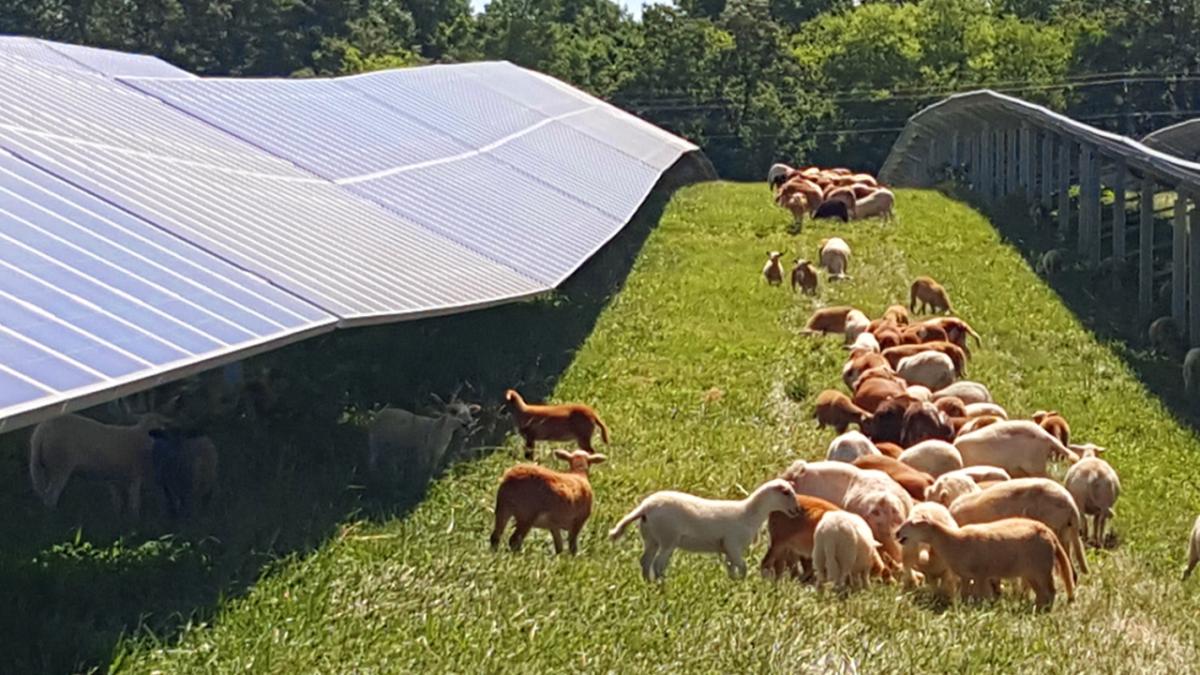Ecocentricity Blog: Farming Squared
By: John A. Lanier

Ecocentricity Blog: Farming Squared
It’s rehash time. About 15 months ago, I wrote this piece comparing the typical utility-scale solar array to a monocrop farm. In that blog, I referenced an alternative practice called agrivoltaics, wherein photovoltaic arrays integrate some form of agriculture on site. I didn’t really dig in (pun!) to the idea of simultaneously farming the land and the sun though, so I’m back for more.
Since writing that last blog, the momentum behind utility-scale solar in the United States has only increased. As this National Renewable Energy Laboratory report shows on slide 17, planned installations have increased sharply since 2018 and continue their upward trajectory. It all shakes out to one obvious fact - we will see more and more installed solar nationwide in the coming years. Where all of those panels are built, however, remains an open question.
The economist in me can’t help but see the market forces at play behind that question. The companies that are installing new solar arrays will be on the hunt for prime land for these projects, and it doesn’t take too much thought to figure out what prime land looks like - sunny and flat. Sounds like typical farmland to me!
More and more, owners of farmland are going to be presented with the choice of continuing to farm or selling to solar developers. We absolutely need more installed solar on the grid, but we also need productive farms! So ideally, we would be able to do both simultaneously. That’s the idea behind agrivoltaics.
I read a great article last week on NPR about a farmer near Boulder, Colorado who has taken the plunge on agrivoltaics for his family farm. Click that link and just look at the pictures if you don’t want to read the whole thing. Do you see how lush that chard and kale looks? It just makes good sense to put the land under solar panels to good use!
That article pointed me to the work being done by the Barron-Gafford research group at the University of Arizona. Their research demonstrates the following benefits of agrivoltaics:
- The potential for increased yield for some shade-tolerant crop species like leafy greens;
- Cooler ambient temperatures that keep the solar panels operating more efficiently;
- Reduced irrigation needs as the shade limits evaporation;
- Available shade that improves working conditions for farm laborers during hot months, and;
- Multiple revenue streams for farm owners.
Admittedly, what works in one location does not always work in another, especially when it comes to agriculture, and so I’m not going to claim that each and every solar installation is suitable for agrivoltaics. But for any that is, shouldn’t we be practicing it? Shouldn’t this become much more of a default utilization of the land, rather than an outlier?
To make that happen, we need way more proof points for agrivoltaics. Here in Georgia, I am encouraged by its utilization with new solar installations in our sunny southwest. Our friends at White Oak Pastures have piloted the grazing of sheep on photovoltaic grassland, and that practice will be expanded to a new 250-megawatt solar installation that broke ground last month.* Still, even in my home state, I would love to see more examples of agrivoltaics that validate its effectiveness with various crop types.
So for anyone out there who is connected to a solar developer or a farm owner, go and talk about this idea with them! Maybe it can work wherever you are, but we won’t know until we try it. And as I wrote in my blog 15-months ago, if it does work, then maybe, just maybe, we can have our cake and eat it too.
*Yes, I am aware that a partner in this project is Silicon Ranch, which is owned in significant part by Shell. I still find it to be an exciting project and an idea that should be replicated where practical.
This blog is available weekly via email subscription. Click here to subscribe.
Ecocentricity Blog: On the Pitch

